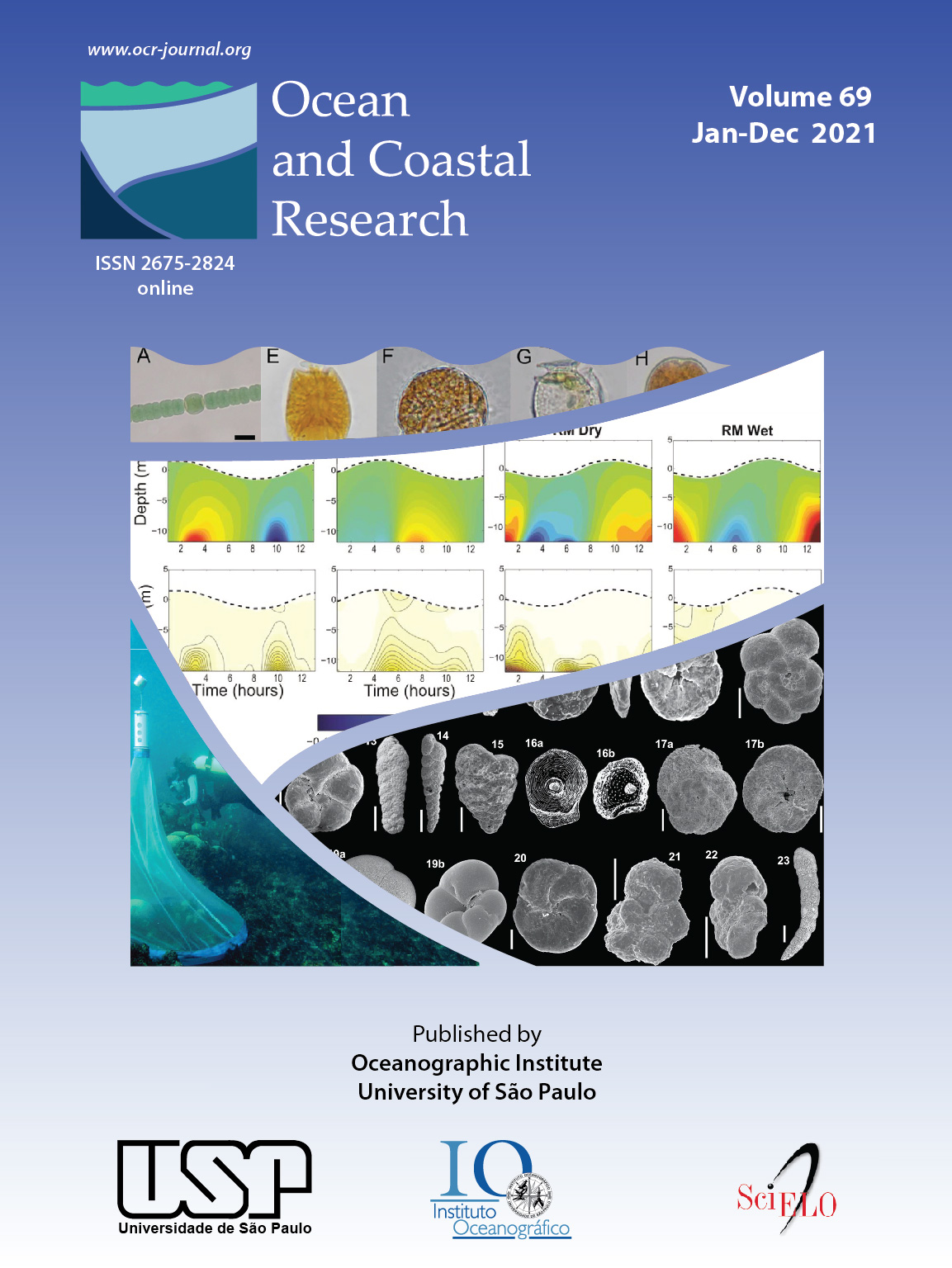Insights on the non-linear solution of Munk's ocean circulation theory from a rotating tank experiment
DOI:
https://doi.org/10.1590/2675-2824069.20-011pspKeywords:
Teaching GFD, Rotating tank, Subtropical ocean circulation, Numerical modeling, Munk's ocean modelAbstract
At age 101, Walter Munk passed away in 2019. His groundbreaking discoveries will still guide and amaze oceanography
students for years to come. Here, we perceive patterns in rotating tank with Munk’s circulation theory aided by a
Lagrangian particles tracking algorithm and numerical modeling. From information captured by video, we track the
trajectories of drifters, and then objectively mapped the streamfunction to obtain the mean circulation pattern. We were
able to reproduce the wind-forced anticyclonic and asymmetric gyre, including the western boundary intensification and
its retroflection. The latter phenomenon was predicted by the non-linear version of Munk’s model and observed in real
subtropical gyres as small recirculation regions. We have configured two numerical model simulations mimicking the
physical experiment, with linear and non-linear terms. The comparison between the numerical and physical experiments
confirmed the effect of non-linear distortion of the gyre. Geophysical fluid dynamics is often hard to visualize, and counterintuitive in a rotating system. We present this set of experiments as a tool for oceanography teaching. Besides studying
general ocean circulation theories and observations through practical examples, this experiment provides an opportunity
to develop basic image processing and geophysical modelling skills.
References
LARGE, W.G. & POND, S. 1981. Open Ocean Momentum Flux Measurements in Moderate to Strong Winds. Journal of Physical
Oceanography, 11(3), 324–336.
Downloads
Published
Issue
Section
License
Ocean and Coastal Research is an open-access journal available through SciELO (Scientific Electronic Library Online).
Ocean and Coastal Research journal title abbreviation is Ocean Coast. Res. and should be used in footnotes, references, and bibliographic entries.
All Ocean and Coastal Research scientific articles are freely available without charge to the user or institution. In accordance with the BOAI definition of open access, all contents are available to readers free of charge. Users may read, download, copy, and link to the full texts of the articles. They may be used for any lawful purpose without prior authorization from the publisher or the author, as long as proper credit is given to the original publication.
All Ocean and Coastal Research published scientific articles receive an individual Digital Object Identifier (DOI) persistent digital document identification.
All the content of the journal, except where otherwise noted, is licensed under a Creative Commons License type BY. Authors retain the copyright and full publishing rights without restrictions.
More information on intellectual property can be found here and on Scielo's Open Acess Statement.
Ocean and Coastal Research is listed in Publons and reviewers and editors can add their verified peer review and editing history to their Publons profile.
Ocean and Coastal Research is indexed in the Directory of Open Access Journals (DOAJ) and complies with principles of transparency and best practice for scholarly publications.
Ocean and Coastal Research is committed to the best standards in open-access publishing by adopting ethical and quality standards throughout the publishing process - from initial manuscript submission to the final article publication. This ensures authors that their work will have visibility, accessibility, reputation, usage, and impact in a sustainable model of scholarly publishing.




